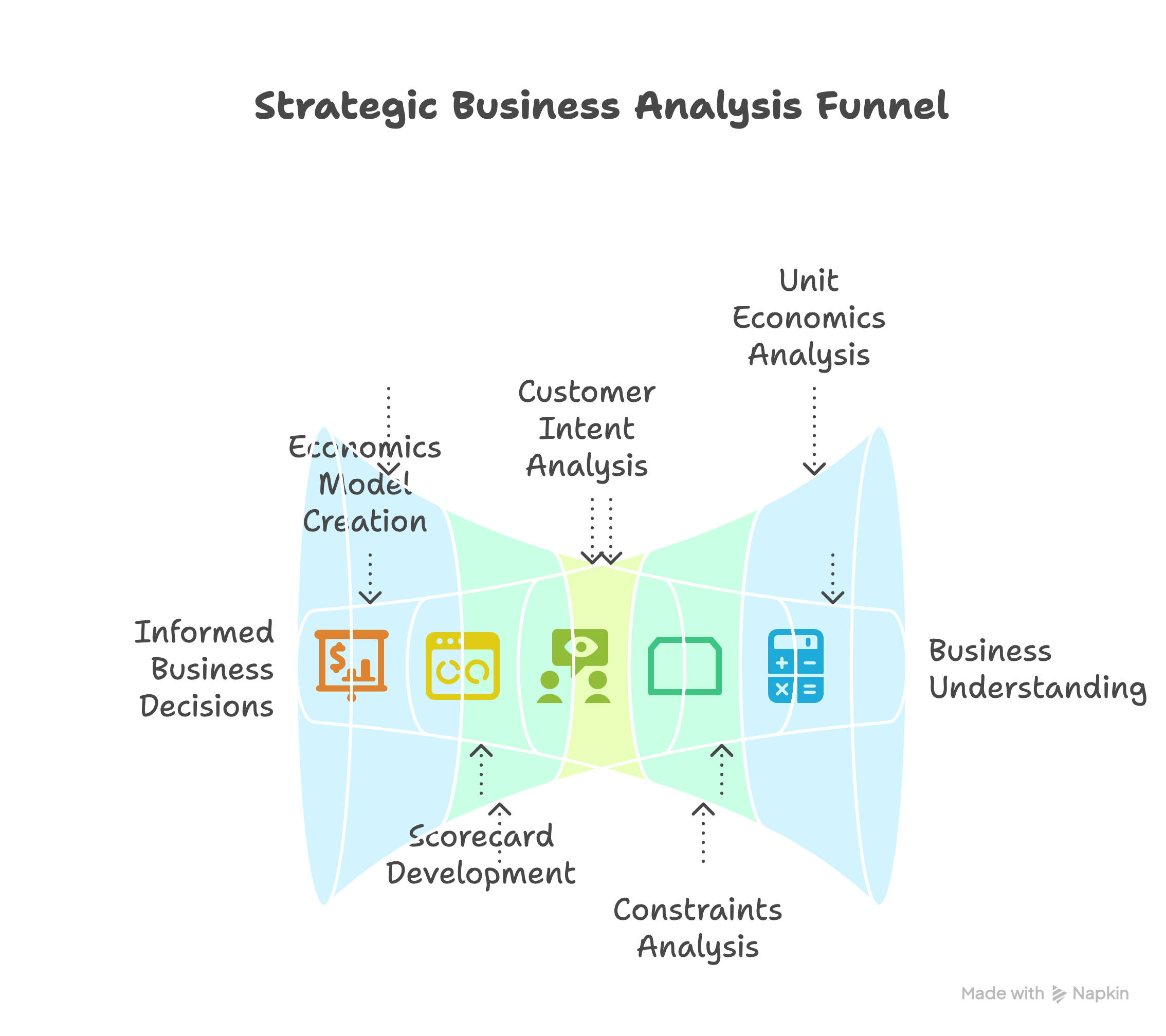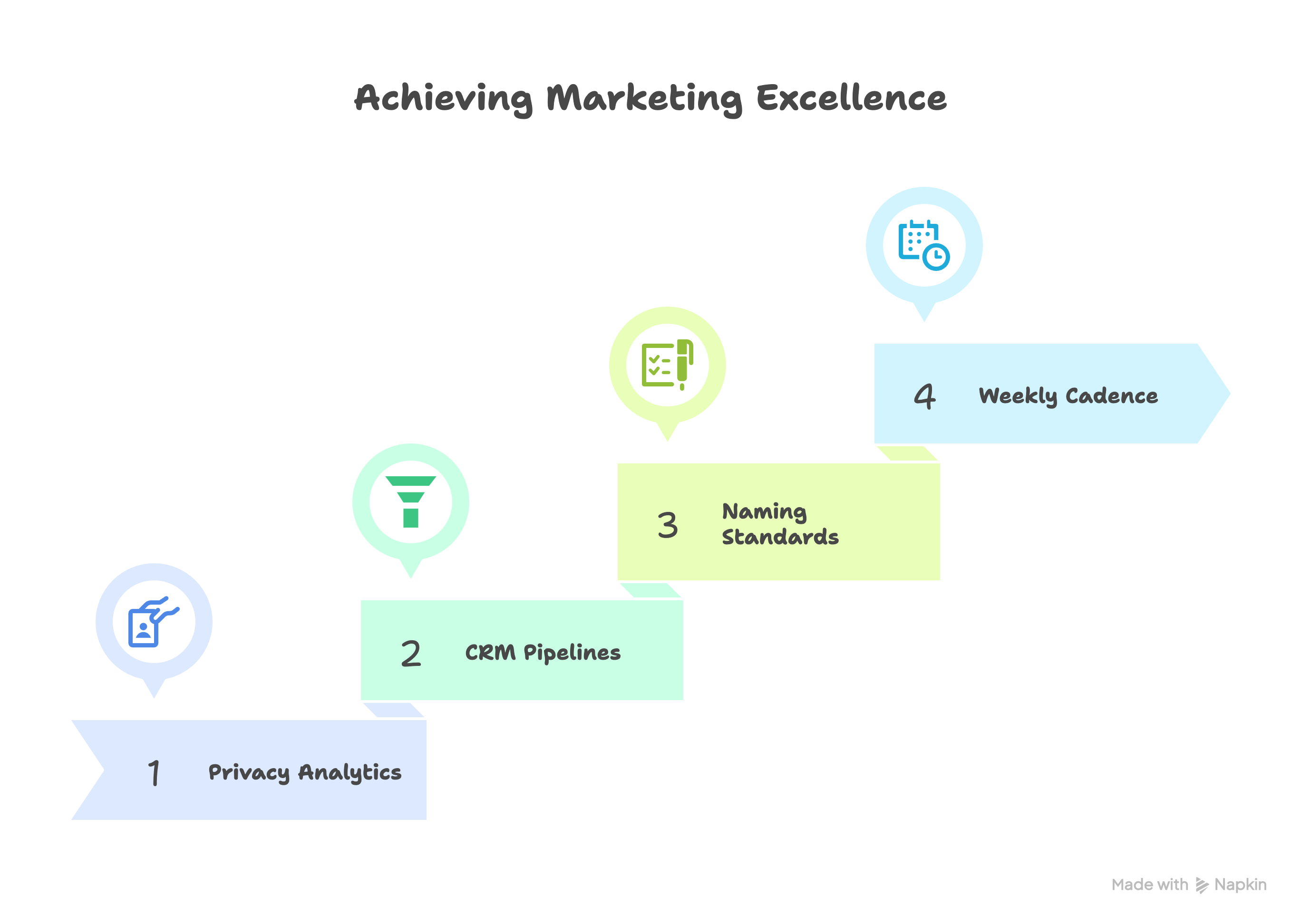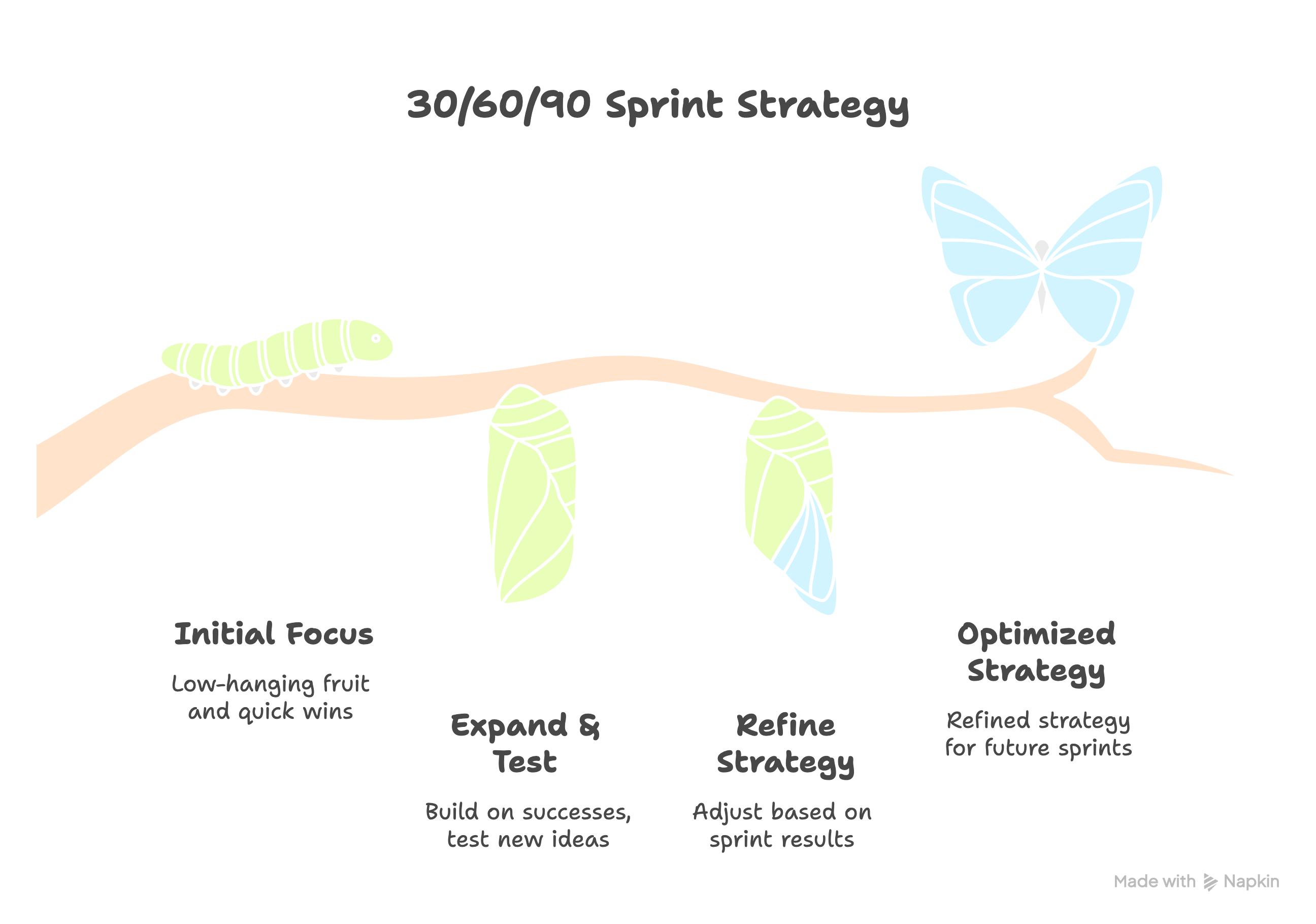the westlake blog
Growth marketing, fractional leadership, plus some lighthearted fun.
Our Operating System (Click-to-Close)
Growth drives value. Our operating system for driving growth, from initial diagnosis and modeling to scaling and optimizing our efforts. The "Click-to-Close" framework emphasizes a data-driven approach, focusing on understanding unit economics, customer intent, and constraints to achieve sustainable and profitable growth. It encompasses diagnosis, instrumentation, pilot sprints, scaling, and continuous review and planning.

Diagnose & Model
The foundation of our operating system lies in a thorough understanding of our business. This phase involves:
Understanding Unit Economics
We need to deeply understand the costs associated with acquiring a customer (CAC), the lifetime value of a customer (LTV), and the payback period. This includes analyzing all marketing and sales expenses, as well as the revenue generated by each customer over their relationship with us.
Constraints Analysis
Identifying and documenting the limitations we face, such as budget constraints, technical limitations, team capacity, and regulatory hurdles. Understanding these constraints allows us to prioritize efforts and make realistic projections.
Customer Intent Analysis
Gaining a deep understanding of our target audience's needs, motivations, and pain points. This involves conducting customer interviews, analyzing survey data, and reviewing customer support interactions to identify patterns and insights.
Building the Scorecard
Developing a comprehensive scorecard that tracks key performance indicators (KPIs) related to customer acquisition, engagement, and retention. This scorecard will serve as our primary tool for monitoring progress and identifying areas for improvement. Examples of KPIs include:
- Website traffic
- Conversion rates (e.g., lead to customer)
- Customer acquisition cost (CAC)
- Customer lifetime value (LTV)
- Churn rate
- Customer satisfaction (CSAT)
Economics Model
Creating a financial model that projects future revenue, expenses, and profitability based on different growth scenarios. This model will help us evaluate the potential impact of various marketing and sales initiatives and make informed investment decisions.
Instrument & Align
With a solid understanding of our business, the next step is to instrument our systems and align our team around a common set of goals and metrics. This phase involves:

Installing Privacy-Safe Analytics
Implementing analytics tools that track user behavior on our website and within our product, while adhering to privacy regulations such as GDPR and CCPA. This includes setting up event tracking, goal tracking, and funnel analysis to understand how users interact with our platform.
CRM Pipelines
Establishing clear CRM pipelines to manage leads and customers throughout the sales process. This includes defining stages, assigning ownership, and tracking key interactions.
Naming/UTM Standards
Implementing consistent naming conventions and UTM parameters to track the performance of different marketing campaigns and channels. This will allow us to accurately attribute conversions and optimize our marketing spend.
Defining Weekly Operating Cadence
Establishing a regular meeting schedule for the marketing and sales teams to review performance, discuss challenges, and make adjustments to our strategy. This cadence will ensure that we are constantly learning and improving.
Pilot Sprints (30/60/90)

The pilot sprints phase is about launching focused tests to validate our assumptions and identify quick wins. This involves:
Focused Tests
Designing and executing small-scale experiments across different marketing channels, such as paid advertising, search engine optimization (SEO), and landing page optimization.
Paid Advertising Tests
Testing different ad creatives, targeting options, and bidding strategies to identify the most effective ways to acquire new customers.
SEO Tests
Optimizing website content and structure to improve search engine rankings and drive organic traffic.
Landing Page Tests
Experimenting with different headlines, calls to action, and layouts to improve conversion rates on our landing pages.
Proving Quick Wins
Focusing on initiatives that have the potential to generate immediate results and demonstrate the value of our operating system.
The 30/60/90 framework provides a timeline for these sprints:
- 30 Days: Focus on low-hanging fruit and quick wins.
- 60 Days: Expand on initial successes and test new ideas.
- 90 Days: Refine our strategy based on the results of the first two sprints.
Scale & Optimize
Once we have identified proven offers and creatives, the next step is to scale our efforts and optimize our performance. This phase involves:
Budget Allocation
Shifting budget to the marketing channels and campaigns that have demonstrated the highest return on investment (ROI).
Audience Expansion
Expanding our target audience by targeting new demographics, interests, and geographic regions.
Geographic Expansion
Expanding our marketing efforts to new geographic markets.
Conversion Rate Optimization (CRO)
Continuously testing and optimizing our website and landing pages to improve conversion rates.
Lifecycle Revenue
Implementing strategies to increase customer lifetime value, such as upselling, cross-selling, and loyalty programs.
Review & Plan
The final phase of our operating system is continuous review and planning. This involves:
Monthly Board-Ready Reporting
Preparing monthly reports that summarize our performance against key metrics and provide insights into our progress. These reports should be concise, visually appealing, and easy to understand.
Quarterly Planning and Road-mapping
Conducting quarterly planning sessions to review our performance, identify new opportunities, and develop a roadmap for the next quarter. This roadmap should be tied to our capacity and margin goals.
Capacity Planning
Assessing our team's capacity to execute our roadmap and identifying any resource constraints.
Margin Analysis
Evaluating the profitability of our different marketing and sales initiatives and making adjustments to improve our overall margin.
By consistently following this operating system, we can drive sustainable and profitable growth for our business.
If this is of interest to you and your team - contact us at alex@westlake.agency